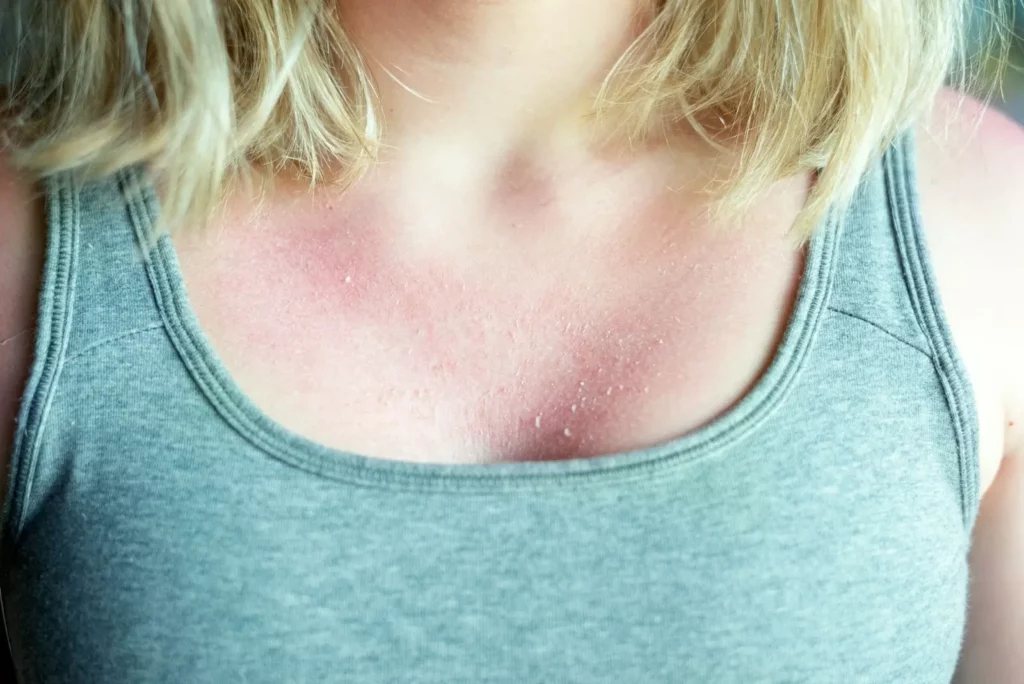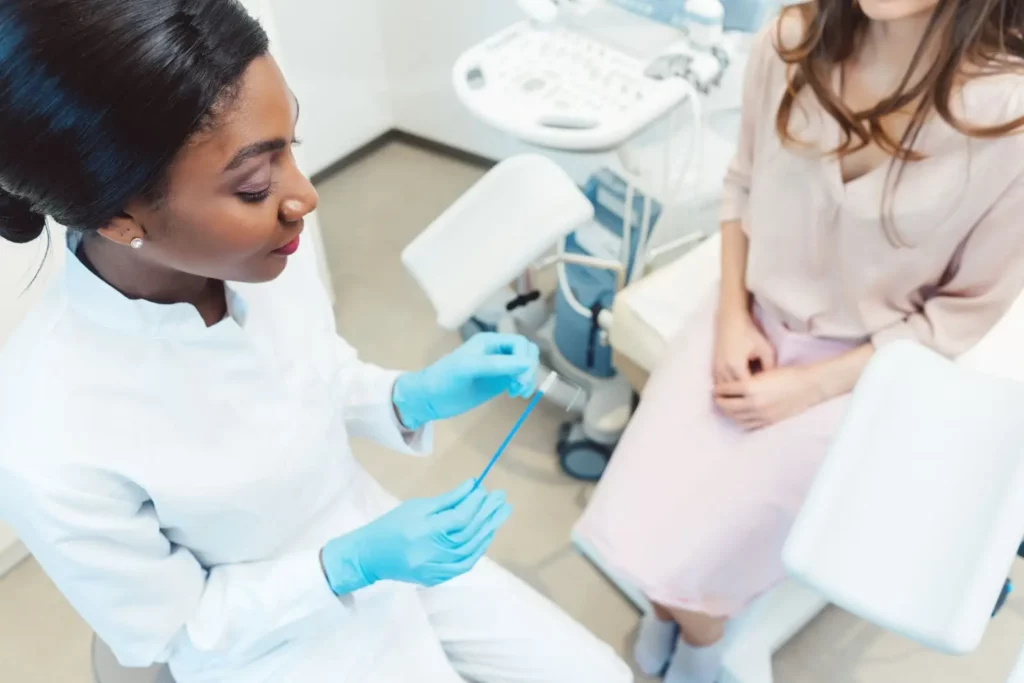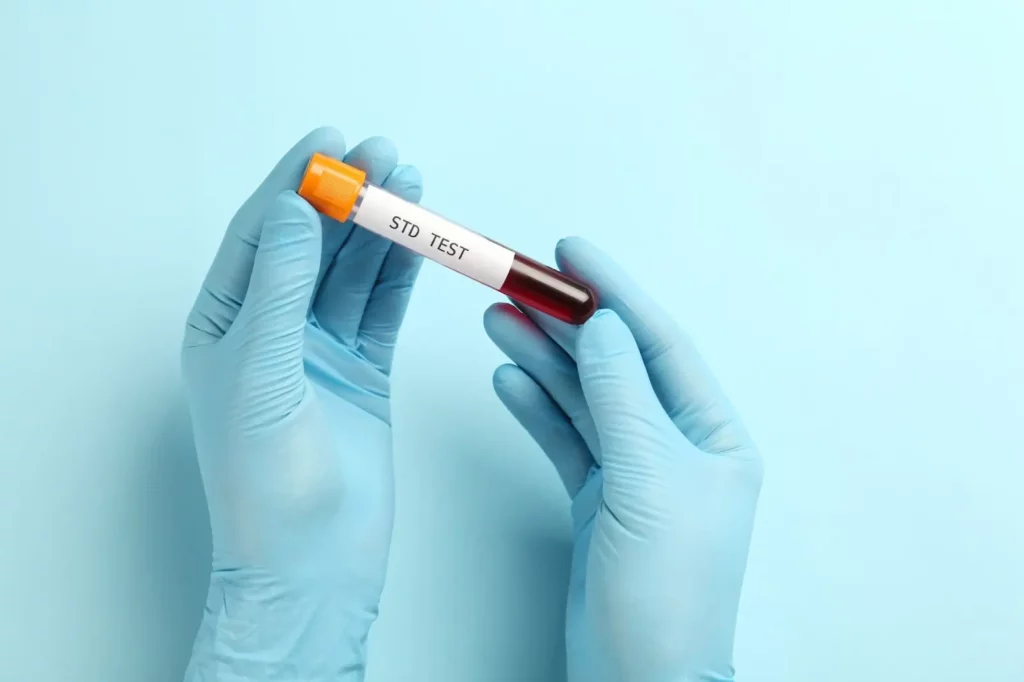Sunburns are a quintessential summer ailment that can transform a day at the beach into an uncomfortable ordeal. While the initial redness and pain are well known, the insistent itching that often follows can be particularly vexing. Understanding why sunburns itch and how to manage this symptom is key to finding relief.
What is a Sunburn?
A sunburn occurs when the skin is exposed to ultraviolet (UV) radiation from the sun or artificial sources, such as tanning beds, for an extended period. This exposure damages the skin’s outer layer, leading to redness, heat, pain, and swelling.
Why Do Sunburns Itch?
The itchiness accompanying a sunburn is caused by the body’s inflammatory response to UV radiation damage. As the skin repairs itself, it causes irritation and a sensation known as “pruritus,” resulting in an itch. The skin may also peel, exacerbating the itchiness.
Types of Sunburns & Symptoms
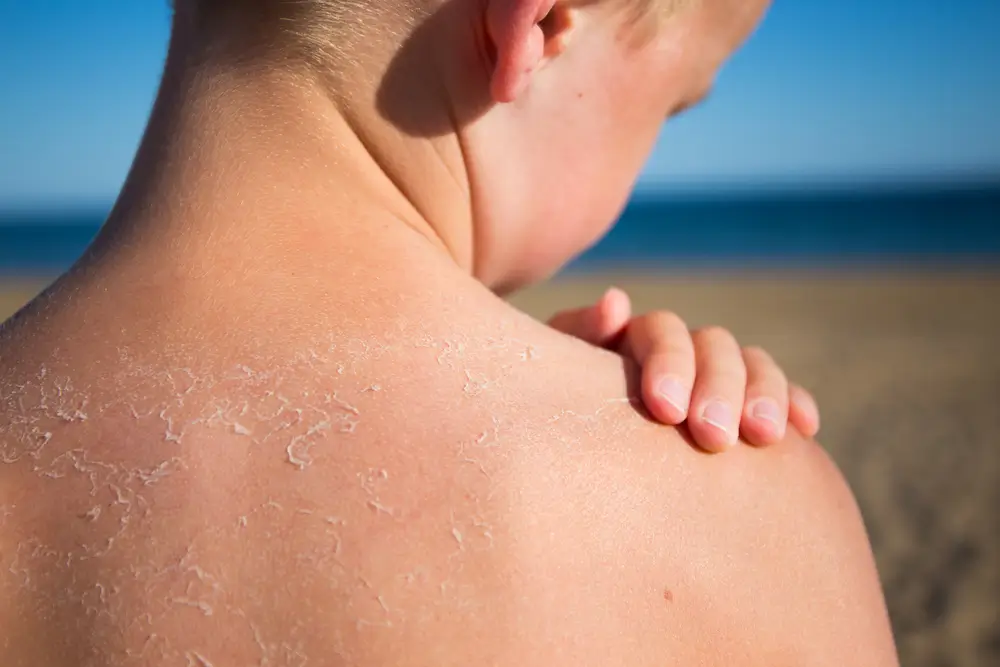
Sunburns come in various forms, each with distinct symptoms that reveal the degree of damage to our skin. Let’s go into the types of sunburns and their indicators, arming ourselves with crucial knowledge for effective treatment and prevention.
First-degree Burns
First-degree sunburns affect the skin’s outer layer, causing redness, mild swelling, and pain. The skin may itch as it begins to heal, usually a couple of days after the initial sun exposure.
Second-degree Sunburns
Second-degree sunburns penetrate deeper into the skin, affecting its underlying layers. They result in more intense redness, swelling, blistering, and significant pain and itching. They require careful management to prevent infection and promote healing.
Sun Rash & Sun Poisoning
Apart from sunburn back itchy, a condition known as “sun rash” or “polymorphic light eruption” can occur, leading to itchy skin weeks after sunburn. More severe reactions like “sun poisoning” involve symptoms like extensive blistering, fever, nausea, and dehydration, necessitating medical attention.
What Is “Hell’s Itch” and Its Symptoms?
“Hell’s Itch,” also known as “suicide itch,” can occur a few days after severe sunburn. Though rare, this condition is characterized by intense, intermittent bursts of itchiness that are difficult to relieve and can disrupt sleep and daily activities.
How to Treat Sunburn Itch
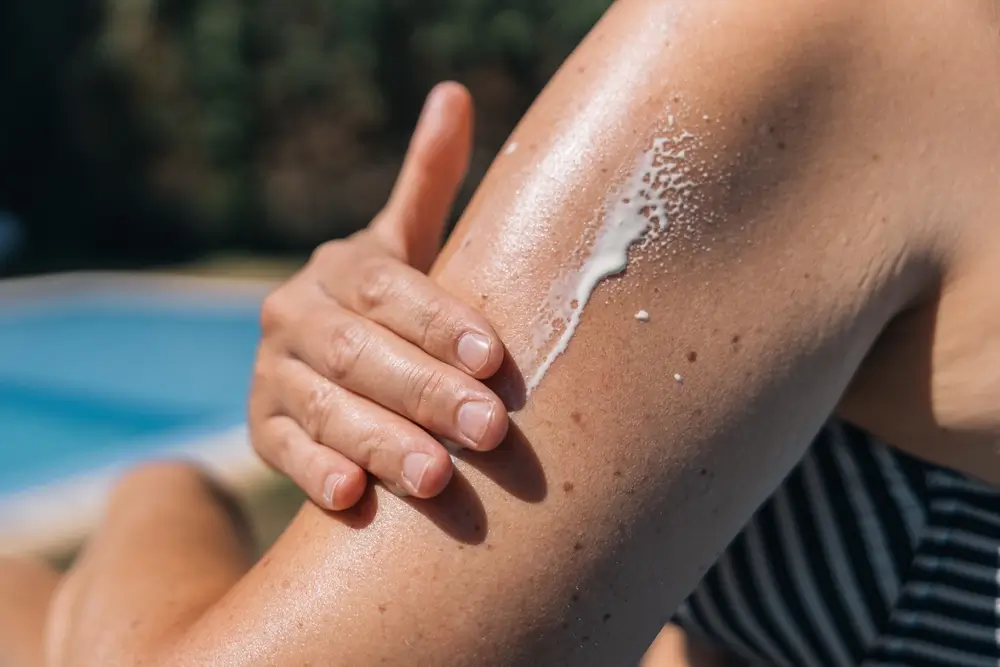
Some ways to alleviate sunburn itch include these:
1. Use a Cool Compress
Applying a cool compress to the affected area can soothe the irritation and reduce inflammation. Make sure the compress isn’t too cold, as extreme temperatures can further damage the skin.
2. Take a Cool Shower or Bath
A cool shower or bath can help calm the inflammation and provide temporary relief from the scratching sunburn itch. Avoid the use of harsh soaps or scrubbing motions which can exacerbate discomfort.
3. Use Moisturizer
After bathing, using a fragrance-free moisturizer can help lock in moisture and decrease the itchiness associated with peeling skin. Look for products containing ceramides or hyaluronic acid for optimal hydration.
4. Smooth on Some Aloe Vera
Aloe vera has cooling and anti-inflammatory properties, making it ideal for treating sunburn itch. Use pure aloe vera gel and apply it gently to the sunburnt skin.
5. Apply Steroid Cream
Over-the-counter corticosteroid creams or anti itch sunburn cream can help relieve itching and swelling. Use as directed and speak with a healthcare provider if the itching persists.
6. Take Anti-inflammatory Medications
How do I stop itching from sunburn? Nonsteroidal anti-inflammatory drugs (NSAIDs) like ibuprofen can reduce inflammation and alleviate sunburn discomfort, including itchiness.
7. Protect Sunburned Skin from the Sun
Cover sunburnt areas with clothing or bandages, and avoid further exposure until the skin has fully healed. Sunscreen should be applied regularly as part of sunburn prevention and care.
Tips to Prevent Sunburn
One of the crucial steps in skin care is preventing sunburn. The first line of defense against the harmful effects of the sun’s ultraviolet (UV) rays involves seeking shade, especially between 10 AM and 4 PM when the sun’s rays are strongest.
Protective Clothing:
- Wide-Brimmed Hat: Offers extensive coverage for your face, ears, and the back of your neck.
- UV-Blocking Sunglasses: Protects your eyes against UV rays which can cause cataracts and other eye conditions.
Sunscreen Application:
- Type: Use a broad-spectrum sunscreen to protect against both UVA and UVB rays.
- SPF Rating: Choose a sunscreen with an SPF of 30 or higher for effective protection.
- Application Coverage: Ensure all exposed skin is evenly covered. Don’t forget easily missed areas like the tops of your feet, your neck, and your ears.
- Reapplication: Crucial every two hours to maintain protection, especially after swimming or sweating which can remove sunscreen from the skin.
Sunburn Pain and Itch Relief
If you find yourself with a sunburn, immediate actions can alleviate pain and itchiness. Cool baths or showers can soothe the skin, followed by a gentle patting to dry, leaving a bit of water on the skin.
Apply a moisturizer that contains aloe vera or soy to help. Drink plenty of fluids to prevent dehydration, and consider taking ibuprofen or acetaminophen to reduce pain and inflammation. If your skin blisters, leave them intact to speed healing and avoid infection. For severe symptoms, consult a healthcare provider.
When should you go to urgent care for a sunburn?
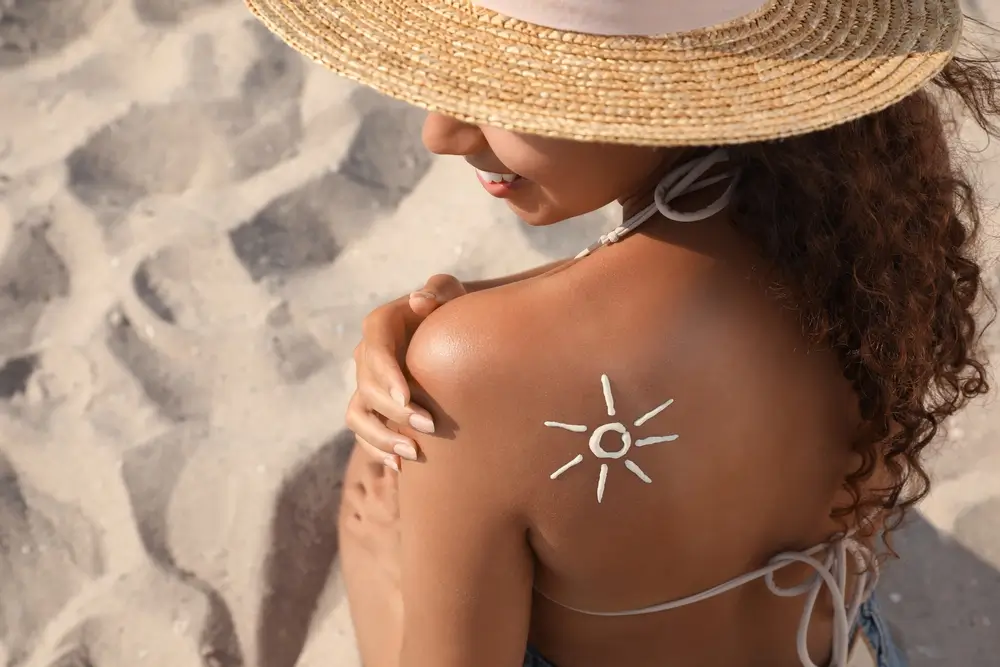
While most sunburns can be treated at home, certain signs warrant a visit to urgent care or an 24/7 Emergency Room in Pearland, TX. These include severe pain and swelling, sunburn covering a large area of the body, blisters on the face or a significant portion of the body, and symptoms of heat exhaustion such as fever above 101°F (38.3°C), headache, nausea, dizziness, excessive thirst, and confusion. If you experience any of these symptoms, seek immediate medical attention.
Keeping Your Skin Healthy All Year Round
Ensuring your skin remains healthy throughout the year involves vigilant sun protection and understanding when to seek medical help for sunburns.
At Aether Health’s 24/7 Emergency Room in Pearland, TX, we understand the critical nature of skin health. That’s why we offer innovative treatments like Summer IV Hydration and vitamin infusion alongside our comprehensive Drug Detox Treatment, designed to support overall wellness and recovery.
Whether it’s treating a severe sunburn or offering hydration services to combat the Texas heat, our team is ready to provide you with high-quality care at any time of the day.
For those particularly harsh sunburns or any other health concerns that can’t wait, Aether Health’s 24/7 Emergency Room provides the immediate care you need. Remember, protecting your skin today means a healthier tomorrow.
